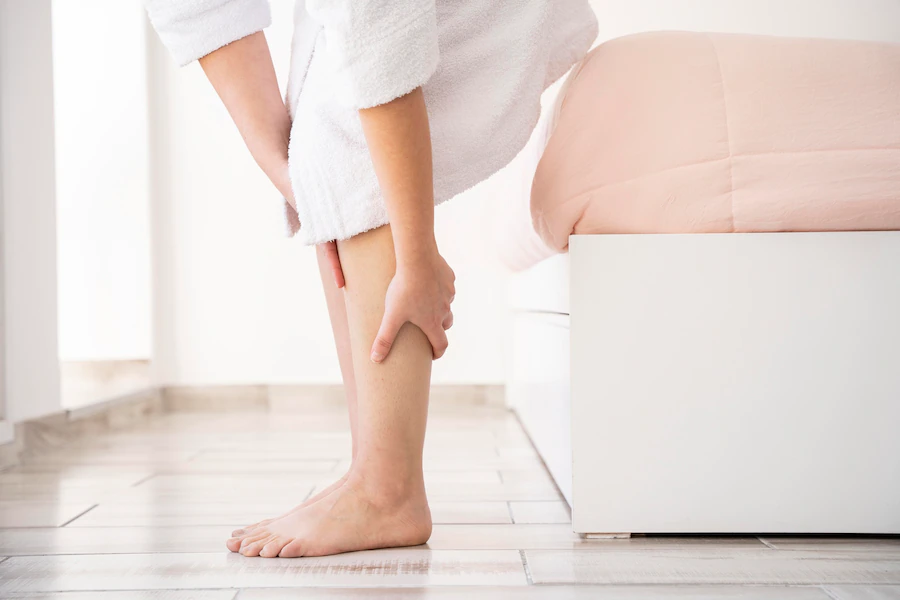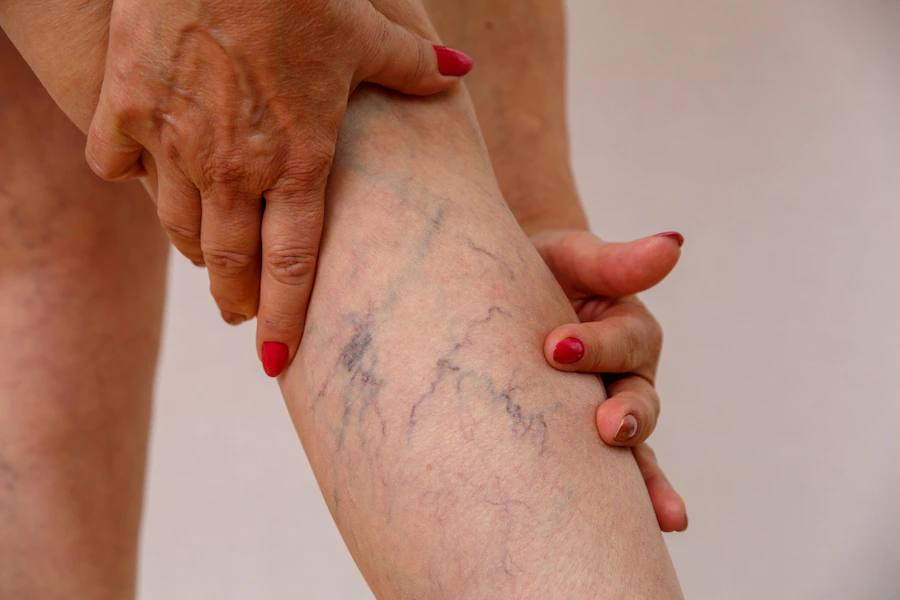5 Warning Signs Of Venous Disease You Shouldn’t Ignore
Venous disease, also known as venous insufficiency, is a condition that affects the veins, primarily in the legs. This disease disrupts the normal blood flow back to the heart. Vein diseases can lead to many uncomfortable symptoms and potentially severe complications. In this article, we will discuss the warning signs of venous disease that you should never ignore.
Contents
What Is Venous Disease?
Venous disease refers to conditions in which the legs’ veins have difficulty returning blood to the heart effectively. This can happen due to weakened vein walls, leading to blood pooling in the legs. The most common types of venous disease include:
– Varicose veins
– Spider veins
– Deep vein thrombosis (DVT)
Causes Of Venous Disease
Venous disease can have various causes, including:
– Family history
– Age and gender
– Obesity and an indolent lifestyle with a lack of physical activity
Signs You Shouldn’t Ignore
Recognizing the warning signs of venous disease is crucial in seeking timely medical attention and preventing further complications. If you have any of the following signs, consult a varicose veins El Paso for a proper diagnosis of your condition:
1. Leg Pain And Aching

One of the earliest signs of venous disease is a dull, persistent ache or leg pain. This discomfort is often worse after long periods of standing or sitting. It may be accompanied by a heavy or tired sensation in the legs.
If you are experiencing persistent leg pain that interferes with your daily activities, it is essential to consult a specialist on veins. They can evaluate your symptoms and determine if they are related to venous disease or other underlying conditions. Also, vein doctors can recommend you the proper treatment based on your preferences and needs.
2. Visible Varicose Veins
Varicose veins are generally enlarged and twisted veins that are visible through the skin. They often appear blue or dark purple and may bulge from the skin’s surface. They are a common symptom of venous disease and can be unsightly and uncomfortable.
3. Leg Swelling
Swelling in the legs, ankles, and feet can be another warning sign of venous disease. The accumulation of fluid occurs due to impaired blood flow and increased pressure in the veins. The swelling may worsen throughout the day and improve with leg elevation.
4. Visible Skin Changes
The skin around the affected veins may change as the venous disease progresses. This can include:
– Discoloration
– Dryness
– Itching
These changes may indicate venous disease and require further investigation.
5. Non-Healing Ulcers
If you have an ulcer on your leg that does not heal within a reasonable period, it is crucial to seek medical help. Non-healing ulcers can be a sign of advanced venous disease. They require appropriate treatment to promote healing and prevent complications. Poorly controlled diabetes can be one of the causes that help to spread the problems.
Conventional treatments for non-healing ulcers include narcotic tissue debridement, would cleansing. Managing the levels of glucose and dressing applications can also help aggravate the problems.
Complications Of Untreated Venous Disease
If you are indifferent to venomous diseases, it will result in severe complications such as:
1. Deep Vein Thrombosis (DVT)
When there is a clot in the blood formed in the deep veins, typically in the legs, there is a high chance of deep vein thrombosis. This condition can potentially lead to complications called pulmonary embolism.
2. Pulmonary Embolism (PE)
PE occurs when a clot in the blood breaks free from the deep veins and travels to the lungs, obstructing the blood flow. It can cause severe chest pain and breath shortage. In some cases, it can be fatal. Prompt medical attention is critical to prevent or treat pulmonary embolism.
3. Chronic Venous Insufficiency (CVI)
CVI is a long-term complication of untreated venous disease. It occurs when the damaged veins fail to return blood to the heart efficiently. CVI can cause symptoms like:
– Chronic swelling
– Pain
– Changes in the skin
CVI can significantly impact a person’s quality of life if not managed properly.
Treatment
When you have a clear indication of the warnings, you must proceed with the treatment without wasting any time. All that you need is alacrity. The First Step is First Aid. The objective of it is to stop the situation from aggravating further.
You must seek medical assistance as soon as possible. For this, you need to dial 911 for the emergency medical service. If it is a snake bite, the experts will go for antivenom treatment to neutralize the venom effect. The sooner your response is, the better your approach will be.
The medical experts will properly identify the areas where you are most affected. You must remove your jewelry and watches from the skin to avoid any risks.
Keep the affected area below the heart so that it slows down the spread of blood in your body at a rapid pace. It’s better that you station yourself in a single place as it will stop the spread of disease fast.
Most important, you must keep yourself calm in such a situation. Your presence of mind and the capacity to handle the situation becomes crucial point during such an exigency.
Calling Expert Help
Venomous diseases are the ones on which you can not take a lenient approach. Please be mindful of taking the help of an experienced practitioner and not try to treat it yourself.
Doing the latter might make the situation worse. Experts professionals go through rigorous training, and they understand the problems right from the preliminary signals. They can immediately provide you with the right treatment that serves your needs. Leave your problems to experts.
Conclusion
Venous disease is a common condition that can cause uncomfortable symptoms. If left untreated, this disease can lead to potentially serious complications. Recognizing the warning signs, such as leg pain and varicose veins, is crucial in seeking timely medical attention.
By understanding the risk factors and complications associated with venous disease, you can take proactive steps to maintain vein health and prevent further complications. Consult experts’ help, and only then can you come out of such an emergency situation.
Additionals:
- How Can You Take Charge of Your Vein Health
- Top 10 Best Leg And Foot Massagers in 2020
- What Is Back Pain? Symptoms, Treatment, And Prevention



